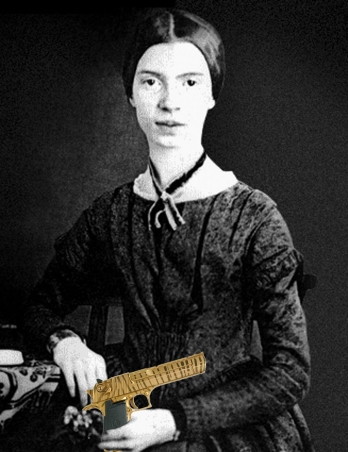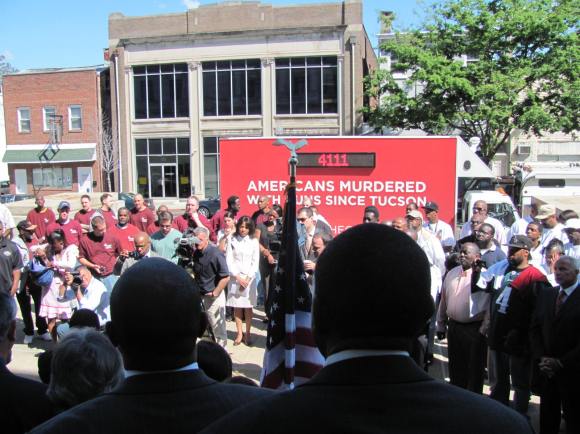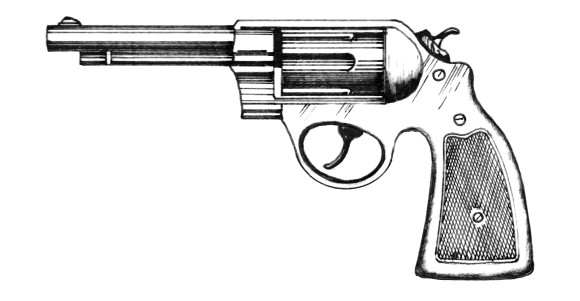The first time I read “My Life had stood – a Loaded Gun,” I was left with the impression that the poem’s speaker was using the gun as a metaphor for her own potential, a potential for action and impact that was unlocked by another person–“The Owner”–but that the speaker is the more powerful of the two.
My Life had stood – a Loaded Gun –By Emily Dickinson
My Life had stood – a Loaded Gun –In Corners – till a DayThe Owner passed – identified –And carried Me away –
And now We roam in Sovreign Woods –And now We hunt the Doe –And every time I speak for HimThe Mountains straight reply –
And do I smile, such cordial lightOpon the Valley glow –It is as a Vesuvian faceHad let it’s pleasure through –
And when at Night – Our good Day done –I guard My Master’s Head –’Tis better than the Eider Duck’sDeep Pillow – to have shared –
To foe of His – I’m deadly foe –None stir the second time –On whom I lay a Yellow Eye –Or an emphatic Thumb –
Though I than He – may longer liveHe longer must – than I –For I have but the power to kill,Without – the power to die –
The Poems of Emily Dickinson: Reading Edition ed by Ralph W. Franklin (Harvard University Press, 1999) via Poetry Foundation
But when I went to find criticism/commentary on the poem, I was greeted with this comment from Brooklyn College professor Lilia Melani:
Most readers feel the power of this poem, which is based on rage. The speaker compares her life to an unused loaded gun and finds joy in fulfilling its purpose to kill. Even if you have never felt a rage so violent that you felt destructive or explosive, can you imagine what such a state must feel like? Does this poem convincingly portray such a rage?
I was like “what? rage? where!?” I associate rage with unchecked ferocity, wildness. But this poem felt controlled. Cold. Precise. Do other people see rage in this? I wonder if it is because of my own personal experience and associations with firearms– I can recall almost viscerally how it felt to hold a gun when I was learning how to fire. I felt very strong and empowered and morally capable since I didn’t feel the urge to shoot anyone. But I knew that I could if I wanted to. I felt very good. Competent. And that is the feeling I get from this poem.
“My Life had stood” is probably one of my favorite poems. There’s a fair amount written about it being a representation of Dickinson’s internal struggle with the power of her writing in an age where poetry was not seen as feminine. If you’re interested in reading more, here’s a medley of excellent criticism compiled by Karen Ford.













